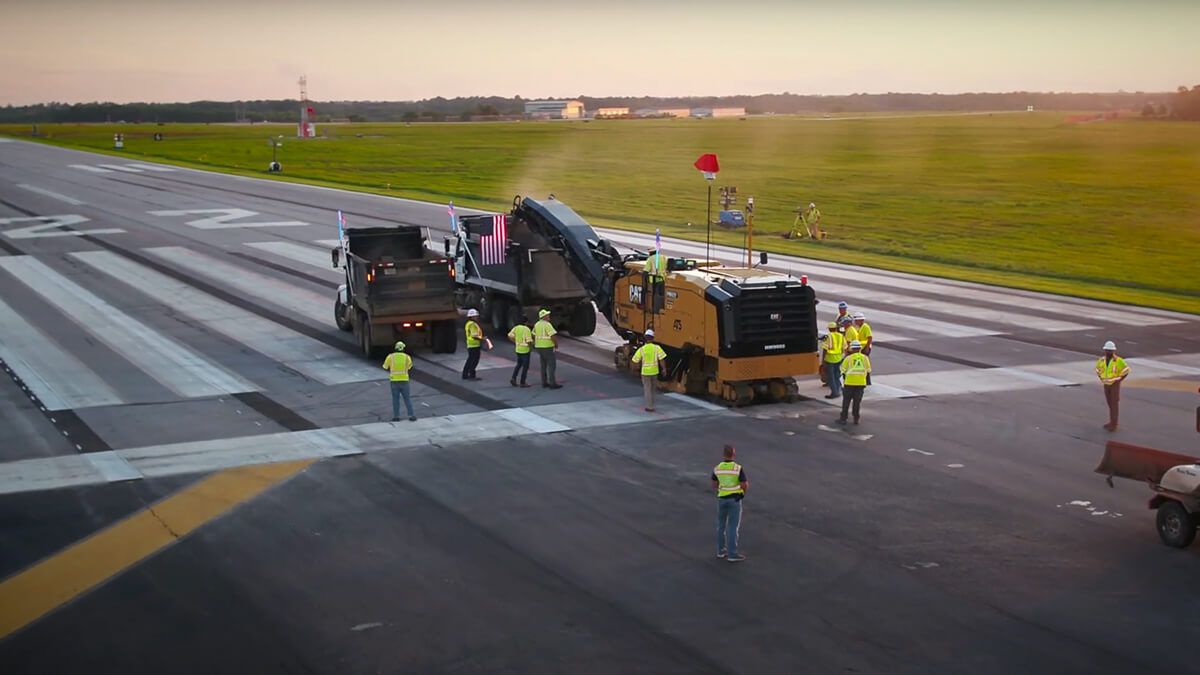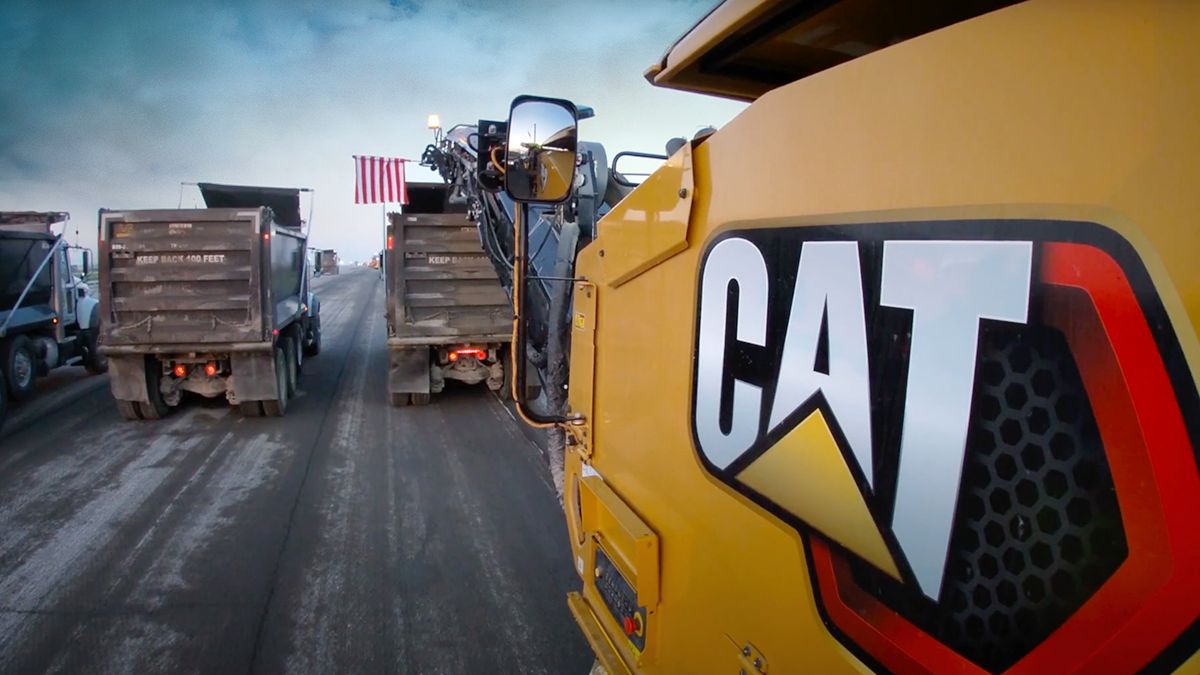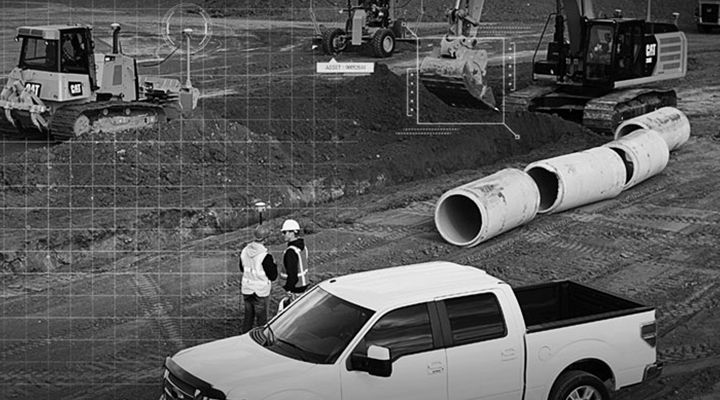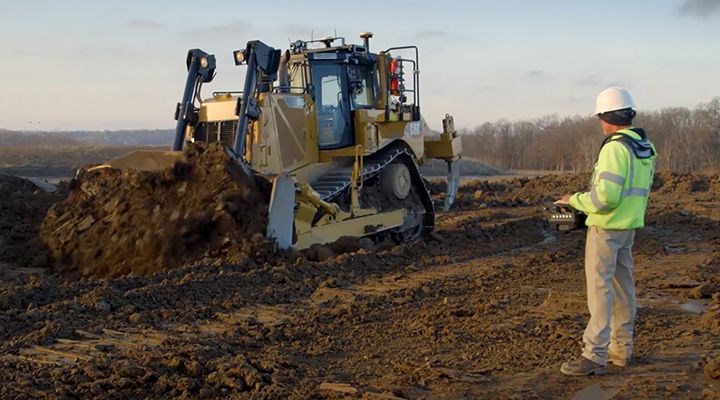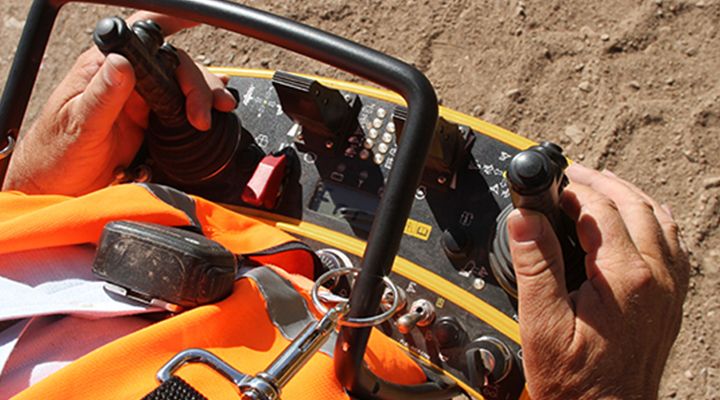If you already have an existing account with another Cat App, you can use the same account to sign in here.
One Account. All of Cat.
Your Caterpillar account is the single account you use to log in to select services and applications we offer. Shop for parts and machines online, manage your fleet, go mobile, and more.
Account Information
Site Settings
Security
Unique Approach to 72-Hour Runway Milling & Repaving Project
Talk about pressure! After a 15-year interval between repaving contracts, lead contractor ATS Construction of Lexington, Kentucky, signed on to handle what many might consider an impossible deadline: mill, sweep, repave and stripe the 7,000-foot-long, 150-foot-wide primary runway at Lexington’s Blue Grass Airport — in just 72 hours. No bonuses. No rehearsals. No weather contingencies.
To make it happen, the ATS team decided to forgo traditional “high-speed” 2D milling and 3D repaving. Instead, they milled to a precision 3D profile using a design model built to exacting elevations and cross-slope specifications. The result? More than 200 team members from ATS and its project partners were able to execute the plan as close to perfection as possible — with the airport ready to reopen several hours prior to the deadline.
Ready, Set, Mill
On day one, an army of “first-shift” workers arrived with eight milling machines, four pavers, 32 haul trucks, sweepers and a full complement of backups. Cat® dealer Boyd Cat had service technicians, service trucks and critical parts onsite around the clock to make sure machine availability stayed as close to 100% as possible. Nothing was left to chance, including an abundant supply of cutter bits.
Minutes after the last flight out, the airport access gates opened, and workers and equipment took their positions. Light towers facilitated round-the-clock operations. Sixteen pairs of preprogrammed Trimble Universal Total Stations communicated and controlled the exact milling profile.
Four 3D-equipped machines cut strips of pavement, while the other four mills, either 2D or operated as 2D, made clean-up passes. During milling operations, six mills were always producing, while two were pulled aside for routine maintenance, including replacement of worn cutter-bits.
Each mill made a full 7,000-foot pass, then was shuttled back to the runway head via lowboy to undergo maintenance before beginning its next pass. A 15-minute interval between starts helped maintain safe working distances and provide space for haul trucks to maneuver. It took a total of 22 passes to complete the milling work.
To avoid confusion at night, the eight mills and their assigned haul trucks were equipped with color-coordinated light sticks. That helped drivers visually reconnect and maneuver their trucks into position for quick transitions.
While work on the runway progressed, a small team equipped with Cat machines widened a taxiway and aircraft ready-line leading to the runway’s head. They used other Cat machines to excavate this addition, install and compact the base material, then pave the thick, multilayered asphalt surface to better facilitate staging of larger, heavier commercial aircraft.

3D Profile Milling Option Preferred
The ATS team spent about a year prior to the start of the Lexington runway project evaluating options and planning the complicated 72-hour “sprint.” That included consultations with Trimble and SITECH representatives about applying 3D technology to the milling phase.
“Clearly, achieving the desired profile by placing emphasis on milling accuracy was the best way to achieve paving consistency,” says Dylan Murphy, a project engineer with ATS. “We also determined this rather unique and proven approach would help alleviate some of the time pressures, while significantly reducing the possibility of introducing errors and incurring penalties.”
Achieving the specified profile through 3D milling had to be spot on. That meant within millimeters, not the more-forgiving tolerances seen on most paving projects.
“This one was totally different than most team members had previously experienced,” says Todd McDaniel, another ATS project engineer. “Their gameday-performance requirements were raised by several notches. Demanding workflow time pressures added another dimension.”

Next Gen Cold Planer Proves Up to the Task
One machine operated in 3D during milling on the runway was the Next Generation Cat PM622 Cold Planer. The ATS team was impressed with the PM622’s features, technologies and simple, well-organized control layout.
“The technology is really incredible. The new grade and slope system is very intuitive and easy to use. The new load control feature is very accurate and provides a significant productivity boost. The advanced cutting system and lacing pattern are other pluses,” Murphy says. “These next generation Cat cold planers are a great example of production-boosting ingenuity for supervisory personnel, operators, the support team and machine owners.”
By the Numbers
$16.2M Budget for milling/repaving
$100M Budget for total airport renovation
72 Airport shutdown window in hours
7,000 Length in feet of main runway 4-22
15 Years since prior repaving
22 Total milling passes
17,000+ Tons moved during milling
10 Total paving passes
21,500+ Tons moved during paving
64 Total tasks in the project master plan

RELATED ARTICLES
You’re here to get ideas to grow your business. Read on for machine insights and expert tips and tricks to get more out of every job.
-
Productivity - More Efficiency. Better Results.
Cat® Technologies gives you the accuracy, consistency and productivity you want.
Learn More -
Automation & Autonomy: What's the Difference?
These words get used interchangeably, creating confusion. To improve consistency, we've defined these terms.
Learn More -
Machine Control & Automation Can Add To Your Bottom Line
Technologies that enhance machine performance can add to the bottom line.
Learn More -
Ask the Expert
Answers on fuel efficiency from an expert - Jason Hurdis, GCI Global Market professional.
Learn More


